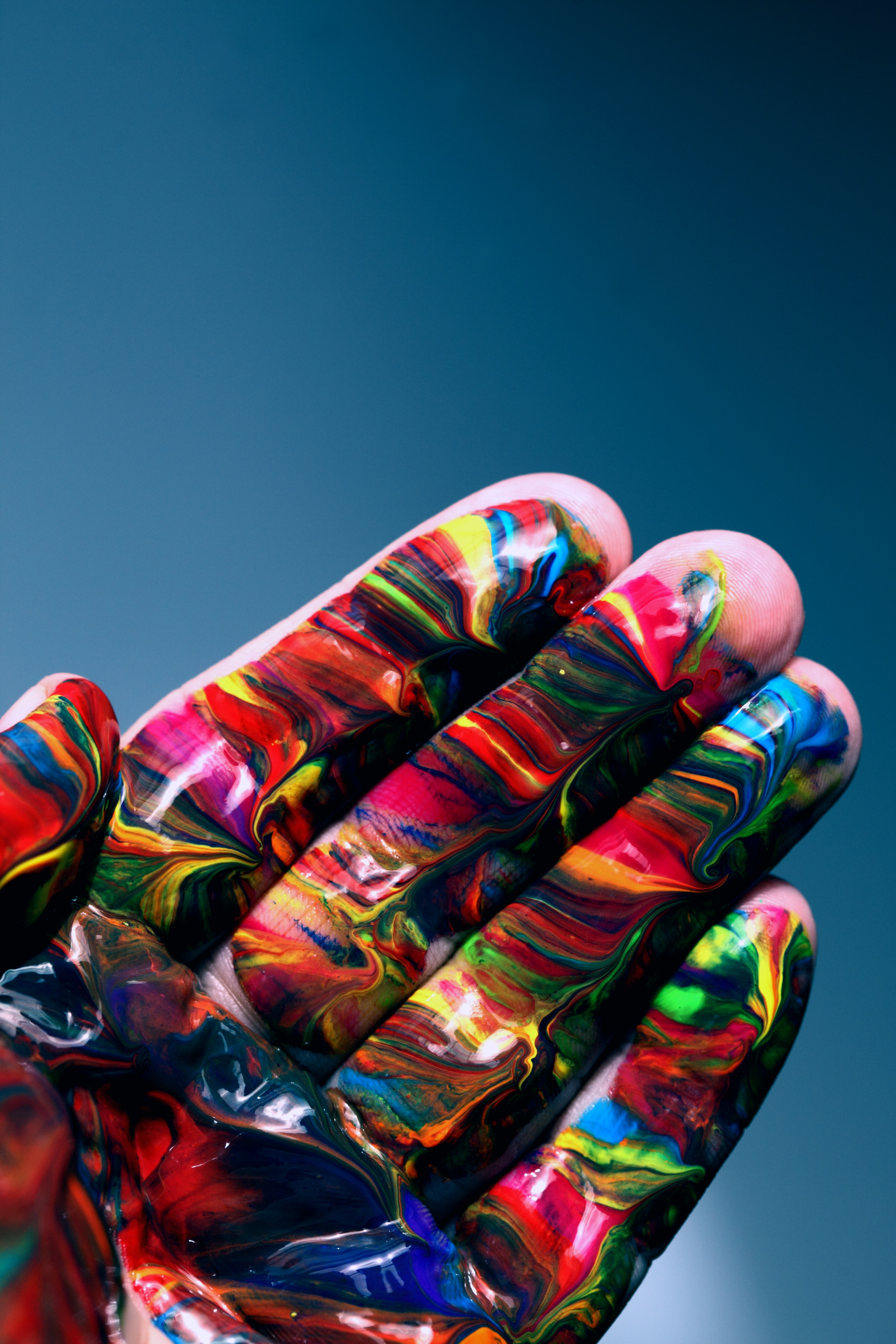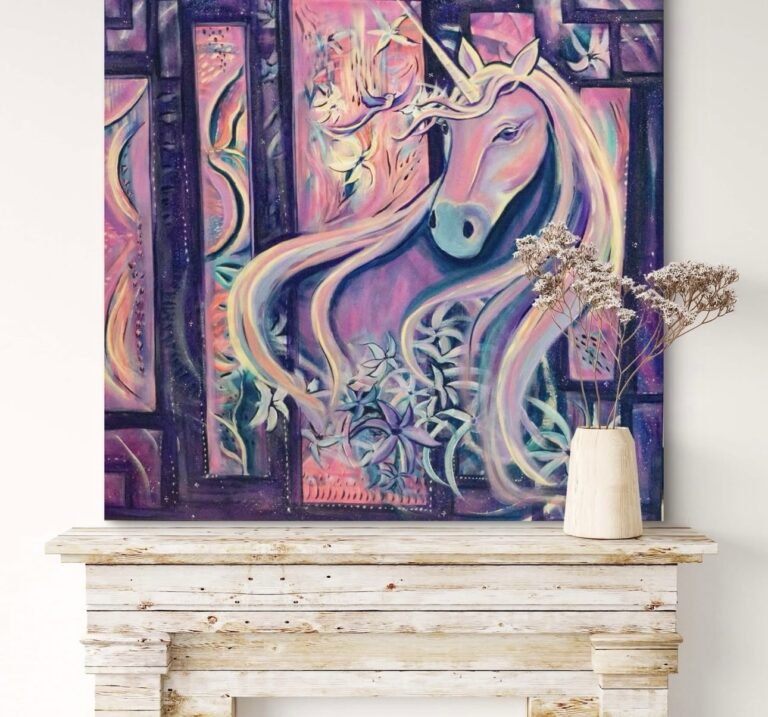Unlocking Inner Healing: How to Use the Painting Process to Awaken Intuition

Introduction
Painting is more than just an artistic expression; it’s a therapeutic journey that offers a pathway to inner healing and self-discovery. As colors blend on the canvas and brushstrokes flow, a unique opportunity arises to connect deeply with your intuition. Embracing an intuitive painting process can help release buried emotions, open up new perspectives, and ultimately foster healing. Whether you’re a seasoned artist or a beginner, here are some ways to use painting as a tool for self-exploration, healing, and connection with your inner self.
1. Set an Intention Before You Begin
Starting a painting session with a focused intention creates a guiding force for the experience. Ask yourself, “What do I need from this painting today?” You might want to release stress, process a challenging emotion, or simply connect with a part of yourself that feels hidden. Setting an intention helps establish a framework without limiting your creativity.
Tip: Write down your intention before you start, or say it aloud to reinforce it. Keep it simple and focused, like “I want to let go of anxiety” or “I am open to whatever arises during this process.”
I like to write intentions on the canvas before I cover everything up and process any energy that arises. Or draw abstracts shapes that represent what I am feeling.

2. Create a Safe, Inspiring Environment
Environment plays a crucial role in setting the stage for intuitive and healing work. Set up your painting area to be as peaceful and comforting as possible, perhaps adding candles, incense, or soft lighting. This can signal to your mind and body that it’s safe to open up and explore emotions.
Tip: Play soothing music or nature sounds to help you focus. Experiment with low lighting if it feels comforting, or open windows to bring in natural light if that feels more supportive.
3. Use Meditation to Clear Your Mind Before Starting
Clearing your mind allows you to paint from a place of authenticity and intuition, rather than from external influences or stress. A short meditation, even just five minutes, can center you and help you release any daily distractions.
Guided Exercise: Sit quietly with your eyes closed and take deep breaths. Visualize a blank canvas in your mind’s eye, representing an open space for whatever emotions, ideas, or images come to you. Imagine each stroke of your brush as an opportunity to let go.
4. Trust Your Color Choices and Let Them Evolve
Choosing colors can be deeply intuitive and reveal subconscious emotions. Rather than planning your colors ahead, let your intuition guide you. If you find yourself drawn to particular shades or suddenly changing colors mid-painting, trust those instincts—they may represent a shift in mood or an emerging feeling.
Tip: Choose colors that make you feel safe, excited, or at peace, even if they clash. There’s no right or wrong choice in an intuitive painting process, as every color has its place.
Every person is a color in the rainbow of life and every color is needed to make this world vivid and bright.
5. Paint with Your Non-Dominant Hand
Painting with your non-dominant hand can help quiet the analytical side of your mind and make room for pure expression. This technique activates the opposite side of your brain, which can be a powerful tool for accessing repressed emotions and unique perspectives.
Exercise: Try creating a few brushstrokes with your non-dominant hand. Don’t worry about control; instead, focus on how it feels and what memories or sensations arise. This can allow unexpected insights to come to the surface.
6. Focus on Movement and the Physical Process of Painting
Instead of focusing solely on the outcome, try paying attention to the rhythm and flow of your body as you paint. Notice the pressure of your brush, the way your arm moves, and the sensations in your hand. This mindfulness practice can connect you more deeply with your body, which often holds onto unresolved emotions.
Tip: Use large, sweeping movements or layer in small, repetitive strokes to find a rhythm that feels calming or cathartic. Embrace any tension or release you feel in your body.
Put movement into the process allows your energy to communicate with you more freely.
7. Allow Yourself to Paint Without Judgment
One of the most freeing aspects of intuitive painting is letting go of self-judgment. Try to approach each brushstroke as if it’s neither right nor wrong; it simply is. This mindset can cultivate a sense of acceptance, allowing you to embrace both your strengths and flaws.
Exercise: Remind yourself as you paint, “I am here to express, not to critique.” If judgmental thoughts arise, observe them without attachment and refocus on your intention to connect and heal.
8. Practice Layering as a Symbol of Letting Go
Adding layers in a painting can be symbolic of letting go, moving forward, and accepting change. Each layer represents a phase in your journey, a feeling, or a thought, and by painting over it, you’re honoring that part of yourself and releasing it.
Tip: Allow yourself to cover up areas that no longer resonate with you. This physical act can mirror emotional release, symbolizing that it’s okay to move on from thoughts, memories, or beliefs that no longer serve you.

9. Experiment with Symbolism and Imagery
Symbols can hold deep personal meaning, acting as mirrors to your inner thoughts and feelings. Pay attention to images, shapes, or patterns that come to mind as you paint. These symbols can reflect parts of your subconscious, making it easier to connect with inner emotions.
Exercise: If you feel compelled to paint a specific image—like a tree, spiral, or eye—go with it. Consider writing a few words about what the symbol means to you after you finish. This reflection can enhance your understanding of what you’re processing.
10. Embrace Pauses and Silent Moments
Sometimes, inner healing happens in silence. Pausing to observe your painting, or even sitting in stillness without touching the canvas, can bring fresh insights or highlight emotions you weren’t aware of. Silence offers a chance to listen to your intuition, allowing feelings and thoughts to rise to the surface.
Tip: Step back from the canvas occasionally and simply observe. Breathe deeply, and ask yourself how you feel about what’s appearing on the canvas. Embrace whatever responses arise without judgment.
11. Close Your Session with Gratitude and Reflection
Ending a painting session with gratitude helps solidify the healing experience. This is a chance to honor the emotions you’ve explored, even if they were challenging, and to acknowledge your courage in facing them.
Exercise: After you finish, write down any realizations or emotions that surfaced during your session. This journal entry can serve as a personal marker of your journey, reminding you of your growth and transformation over time.
12. Display Your Painting as a Reminder of Your Journey
Once your painting is complete, consider placing it somewhere you can see regularly. It can act as a powerful reminder of the healing and self-discovery you experienced. This small display of vulnerability reinforces the progress you’ve made and the power of your intuition.
Tip: If you’re comfortable, share your painting with others who may resonate with its journey. It can inspire others to embark on similar healing journeys, creating a circle of shared strength and understanding.
Conclusion
The painting process offers a unique medium for connecting with our inner worlds, healing past wounds, and opening up to intuition. By allowing yourself to paint freely and openly, without the pressure of perfection, you create a space where self-reflection, intuition, and healing can thrive. Whether you’re using color to release emotions, layering to symbolize letting go, or symbols to connect with your subconscious, each technique can bring you closer to your true self.
With every brushstroke, you’re not just creating art; you’re creating a path to healing and growth. Embrace the journey, let your intuition be your guide, and witness the transformation unfold, one color at a time.
Every minute is worth it, so enjoy the journey!








